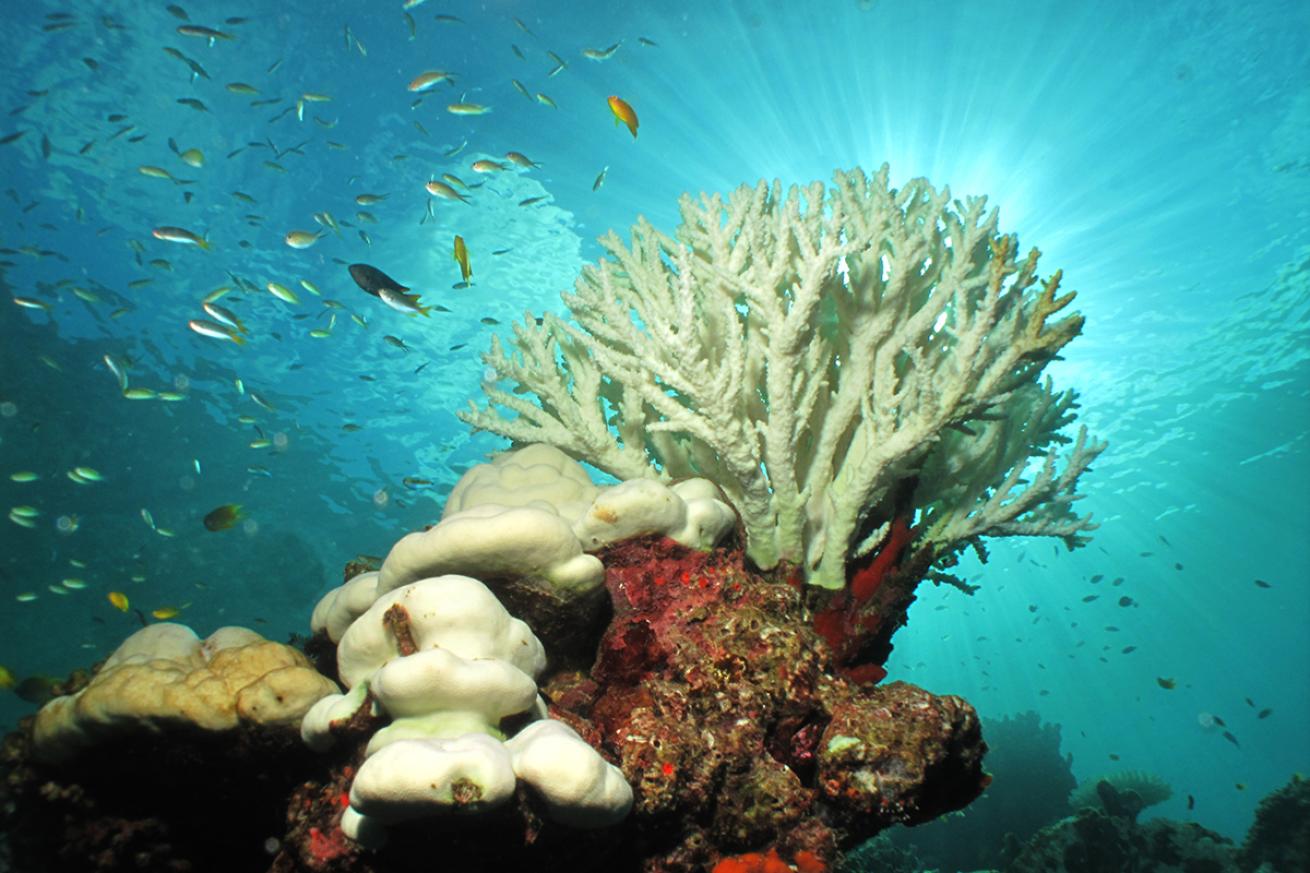Annual Coral Bleaching Likely This Century, Says UNEP Report

Shutterstock.com/acro_phuketThe world's reefs will bleach annually in only 14 years without major emission cuts, the UNEP report predicts.
Annual severe coral bleaching around the world is inevitable this century without carbon cuts beyond current international goals, according to a report released last week from the UN Environment Programme.
“If we continue with business-as-usual emissions… then the average year that we’re going to see these bleaching conditions start to happen every year is 2034. That’s in 14 years,” says Gabriel Grimsditch, programme management officer of UNEP’s Marine and Freshwater Branch and a co-author of the report. This is about a decade sooner than UNEP’s 2017 projection.
Even if the Paris Agreement is fully implemented, the report estimates global bleaching events will be delayed only 11 years on average, to 2045. If corals can adapt to one-degree Celsius warming, Grimsditch says, the annual bleaching could be pushed back another 30 years. These estimates are based on the Intergovernmental Panel on Climate Change’s 2018 climate models.
“The Paris Agreement is a great start,” says Grimsditch, “but it's something we need to go further than that if we want to have healthy and vibrant coral reefs in the future.”
Bleaching is not an assured death sentence for reefs. Some healthy corals can rebound after bleaching if they are hearty enough or if the water cools back down quickly.
“So we've got two issues here,” says Alice Grainger, communications director at the Coral Restoration Foundation. “We've got bleaching on a healthy reef which can recover from up to a point and then you've got bleaching impacts on a degraded reef. Obviously, bleaching impacts on degraded reefs are much, much more serious because the reef just simply doesn't have the ecosystem strength or diversity to be able to rebound.”
The Philippines, Solomon Islands, Fiji, Cuba, and Saudi Arabia are among the countries whose reefs are expected to experience some bleaching earlier than average. Several regions — including Indonesia, Western Australia, Bahamas, Madagascar, India and Malaysia — are identified as potential refuge regions, or areas with some reefs likely to bleach later, on average, than other areas.
The report does not predict if or when specific reefs will bleach; as a global analysis, it does not account for local conditions that can influence an individual reef’s susceptibility to bleaching, such as coastal runoff or a cold-water upwelling. Research indicates that coral in clean waters free of stressors like overfishing are more likely to rebound after bleaching. In general, reefs further from the coast are healthier than those near heavily populated shorelines, according to a recently released NOAA report on U.S. corals.
“This is why, given the forecast, it's critical for us to remove as many local stressors as we can in the short to medium term,” Grainger says, like anchor strikes and pollution.
UNEP partners are already working to downscale the report’s data for Florida, Hawaii and the Tun Mustapha marine protected area in Malaysia to inform local management decisions, according to Grimsditch.
“There's definitely going to be more of a need for restoration work on a much larger scale than what we're doing at the moment if we don't want to lose these ecosystems,” says Grainger. “We need to start thinking about it on an industrial scale.”
Scientists around the world, including those at the Coral Restoration Foundation, are working to support reefs through the bleak future outlined in the report. CRF’s work includes assisted reproduction of Florida's most naturally resilient corals, while other teams, such as the Ruth Gates Lab at the Hawai‘i Institute of Marine Biology, are experimenting with assisted evolution to increase coral’s heat tolerance.
Outplanting the new coral is another major part of the equation that will determine how well restoration efforts can keep up with degradation. Assembly line production, 3D printers and robots are all part of ongoing research aimed at increasing outplanting efficiency.
But, to rival the bleaching projections, “we need to amp up the pace” of investment in the field, Grainger says. “We need to be doing what we're doing. But we definitely need to be doing more of it.”










